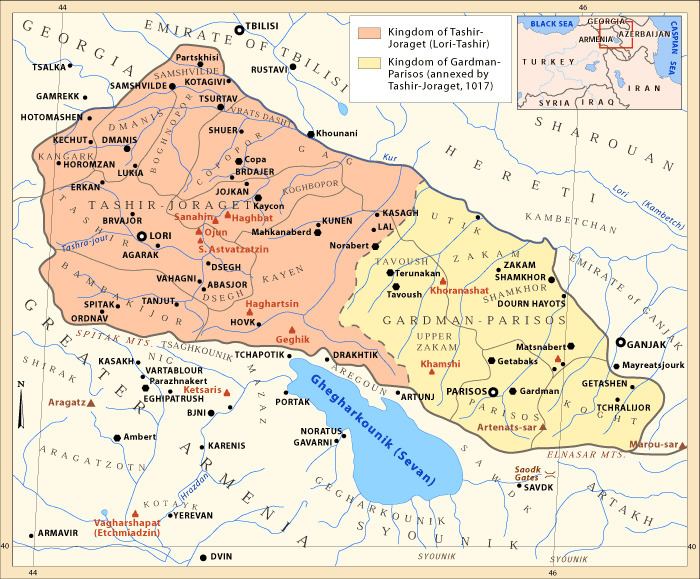 | ||
Gardman (Armenian: Գարդման) was one of the eight cantons of the ancient province of Utik in the Kingdom of Armenia and simultaneously, together with the canton of Tuchkatak, an Armenian principality. In the Early Middle Ages a feudal state of Gardman emerged on the area of Caucasian Albania. It roughly corresponded within the modern Qazakh, Shamkir or Gadabay raions of Azerbaijan.
History
In prehistoric times Gardman was homeland of the Armenized tribe Gardman, with a possible Georgian connection. Contemporary Armenian authors referred to the historical area of Gardman as Northern Artsakh. During the reign of the Arshakuni kings of Armenia (66-428 A.D.), Gardman was the seat of the nakharars of Utik' (and for this, it was sometimes called "Gardmantsvots ishkhanutyun", or the principality of Gardman). After the collapse of the Armenian royal dynasty Gardman was acquired by Caucasian Albania in 387. In the seventh century the local house of Gardman was replaced by the Mihranid family (of Persian or Parthian origin), which later became the ruling dynasty in the region of Arran.
The region was conquered by the Arabs in 855. Contemporary Armenian historians repeatedly noted the presence of two well known venues in Gardman: a fortress called Getabakk' (in the current-day Azerbaijani region of Gadabay) and a copper mine.
In 982, Gardman and Parisos, the northern district of Artsakh, became a small Armenian kingdom which lasted until 1017 and thereafter it became part of the Kingdom of Lori. In 1601, the princely family of Melik-Shahnazaryan established the melikdom of Gardman. The ruling family belonged to a branch of the House of Khachen, and their residence was in the village of Voskanapat (and for this reasion, the statelet was sometimes referred to as the Voskanapat melikdom). The territorial rights of the meliks were confirmed after the Russian Empire took control of the region in the early nineteenth century.
